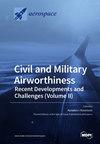Investigation of Spray Characteristics for Detonability: A Study on Liquid Fuel Injector and Nozzle Design
IF 2.1
3区 工程技术
Q2 ENGINEERING, AEROSPACE
引用次数: 0
Abstract
Detonation engines are gaining prominence as next-generation propulsion systems that can significantly enhance the efficiency of existing engines. This study focuses on developing an injector utilizing liquid fuel and a gas oxidizer for application in detonation engines. In order to better understand the spray characteristics suitable for the pulse detonation engine (PDE) system, an injector was fabricated by varying the Venturi nozzle exit diameter ratio and the geometric features of the fuel injection hole. Analysis of high-speed camera images revealed that the Venturi nozzle exit diameter ratio plays a crucial role in determining the characteristics of air-assist or air-blast atomization. Under the conditions of an exit diameter ratio of Re/Ri = 1.0, the formation of a liquid film at the exit was observed, and it was identified that the film’s length is influenced by the geometric characteristics of the fuel injection hole. The effect of the fuel injection hole and Venturi nozzle exit diameter ratio on SMD was analyzed by using droplet diameter measurement. The derived empirical correlation indicates that the atomization mechanism varies depending on the Venturi nozzle exit diameter ratio, and it also affects the distribution of SMD. The characteristics of the proposed injector, its influence on SMD, and its velocity, provide essential groundwork and data for the design of detonation engines employing liquid fuel.调查可引爆性的喷雾特性:液体燃料喷射器和喷嘴设计研究
爆燃发动机作为下一代推进系统正日益受到重视,它能显著提高现有发动机的效率。本研究的重点是开发一种利用液体燃料和气体氧化剂的喷射器,以应用于爆轰式发动机。为了更好地了解适合脉冲爆轰发动机(PDE)系统的喷射特性,通过改变文丘里喷嘴出口直径比和燃料喷射孔的几何特征,制作了一个喷射器。高速摄像图像分析表明,文丘里喷嘴出口直径比在决定空气辅助雾化或空气喷射雾化特性方面起着至关重要的作用。在出口直径比 Re/Ri = 1.0 的条件下,观察到出口处形成了液膜,并确定液膜的长度受燃料喷射孔几何特征的影响。通过测量液滴直径,分析了燃料喷射孔与文丘里喷嘴出口直径比对 SMD 的影响。得出的经验相关性表明,雾化机制随文丘里喷嘴出口直径比的变化而变化,同时也会影响 SMD 的分布。拟议喷射器的特性、对 SMD 的影响及其速度,为采用液体燃料的爆燃发动机的设计提供了重要的基础和数据。
本文章由计算机程序翻译,如有差异,请以英文原文为准。
求助全文
约1分钟内获得全文
求助全文
来源期刊

Aerospace
ENGINEERING, AEROSPACE-
CiteScore
3.40
自引率
23.10%
发文量
661
审稿时长
6 weeks
期刊介绍:
Aerospace is a multidisciplinary science inviting submissions on, but not limited to, the following subject areas: aerodynamics computational fluid dynamics fluid-structure interaction flight mechanics plasmas research instrumentation test facilities environment material science structural analysis thermophysics and heat transfer thermal-structure interaction aeroacoustics optics electromagnetism and radar propulsion power generation and conversion fuels and propellants combustion multidisciplinary design optimization software engineering data analysis signal and image processing artificial intelligence aerospace vehicles'' operation, control and maintenance risk and reliability human factors human-automation interaction airline operations and management air traffic management airport design meteorology space exploration multi-physics interaction.
 求助内容:
求助内容: 应助结果提醒方式:
应助结果提醒方式:


